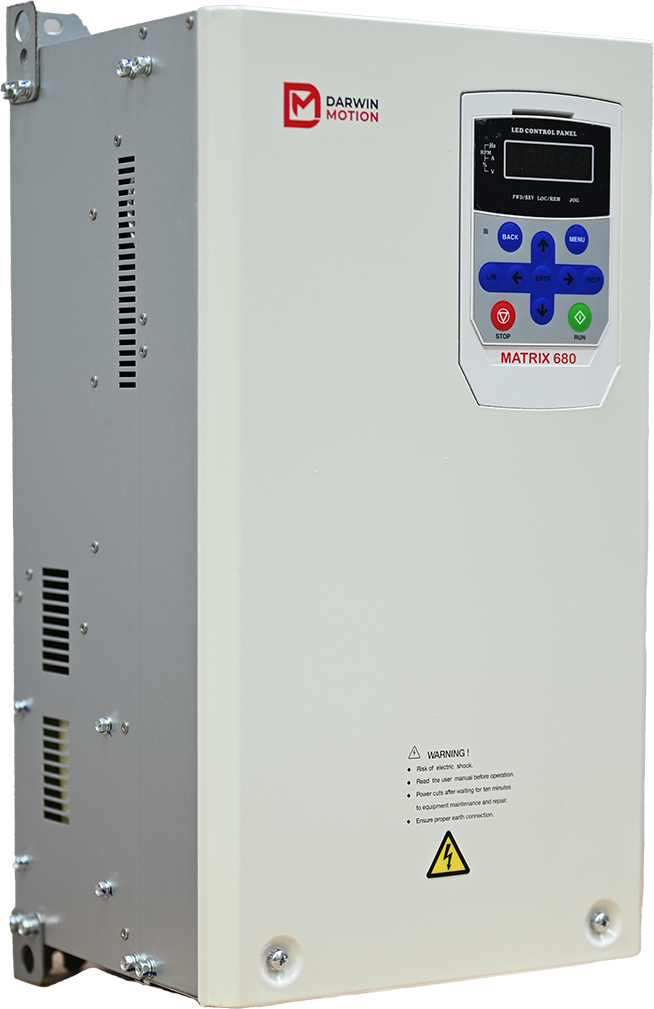Posted on 9th May 2025

In industries where compressed air is essential, such as manufacturing, automotive, food processing, and pharmaceuticals, energy costs can account for a significant portion of operational expenses. A major contributor to these costs is the energy consumption of air compressors. However, advancements in compressor technology, particularly the integration of Variable Frequency Drives (VFDs), have made it possible to drastically reduce energy usage and improve overall system efficiency.
This article explores how VFD-installed compressors are helping businesses cut down on energy consumption, driving sustainability efforts and lowering operational costs.
A Variable Frequency Drive (VFD) is an electronic device that controls the speed of an electric motor by adjusting the frequency of the power supplied to it. In a compressor system, a VFD can regulate the motor’s speed in response to the demand for compressed air. Traditional compressors, on the other hand, operate at a constant speed, regardless of how much compressed air is actually needed at any given time.
By installing a VFD on an air compressor, the motor can adjust its speed according to real-time requirements, allowing for more efficient energy usage and reducing unnecessary power consumption.
One of the main advantages of VFD technology is its ability to adjust compressor speed based on the actual air demand. In traditional fixed-speed compressors, the system constantly runs at full capacity, even when the demand for air fluctuates. As a result, when air demand is low, the compressor still consumes a significant amount of energy.
With a VFD-installed compressor, the system operates dynamically, adjusting to match the required air volume. For example, if an industrial plant only requires a smaller amount of compressed air, the compressor can slow down to meet that demand, rather than running at full power and wasting energy.
Compressors without VFDs often experience "hard starts," where the motor is abruptly powered on at full speed. This sudden surge of power not only increases energy consumption but also causes stress on the motor, leading to greater wear and tear. Over time, this can shorten the lifespan of the compressor and lead to more frequent maintenance and repairs.
VFDs, however, provide a "soft start" feature, gradually increasing the motor speed to its desired operating level. This smooth startup reduces energy spikes, minimizes mechanical stress, and extends the life of the compressor.
Compressors typically operate at part-load conditions most of the time, which means they do not need to operate at full capacity to meet demand. However, traditional compressors remain running at full power even when not needed, wasting energy.
VFDs allow compressors to efficiently operate at part-load conditions by adjusting motor speed to match the air requirement. For example, if the demand for compressed air is only 50% of the compressor's capacity, the VFD will reduce the motor speed by about 50%. This leads to significant energy savings, as energy consumption decreases non-linearly with motor speed. A reduction in speed can result in energy savings of up to 30-50% or more.
Another significant benefit of VFD-controlled compressors is the ability to optimize system pressure. Many systems operate at unnecessarily high pressures, wasting energy in the process. VFDs enable compressors to run at the optimal pressure level required by the system, which can reduce energy usage and increase overall system efficiency.
In many industries, system pressure can be reduced without compromising production processes. By installing a VFD and maintaining optimal pressure, businesses can achieve substantial energy savings while still meeting production requirements.
Several industries have already seen impressive results in terms of energy savings by implementing VFD-installed compressors. Some studies have shown that VFDs can reduce energy consumption by as much as 40% or more in certain applications. These savings are achieved through the combination of demand-based operation, reduced mechanical stress, and improved system optimization.
For instance, a large automotive manufacturing plant that installed VFDs on its air compressors reported a 30% reduction in energy consumption, leading to savings of over $100,000 annually. Similarly, a food processing facility using multiple compressors was able to achieve a 25% reduction in energy costs, translating to savings of around $75,000 per year.
In addition to the economic benefits, VFD-controlled compressors contribute significantly to sustainability efforts by reducing energy consumption. Lower energy usage means fewer greenhouse gas emissions and a smaller carbon footprint. As industries strive to meet sustainability goals and comply with environmental regulations, the adoption of energy-efficient technologies like VFDs can play a key role in reducing a company’s environmental impact.
By installing VFD compressors, businesses not only save on energy costs but also demonstrate their commitment to sustainable practices and corporate responsibility.
Maintenance and Cost Considerations
While VFD-installed compressors offer significant energy savings, there are some upfront costs associated with the installation of VFD technology. The initial investment for a VFD system can be higher than for a traditional compressor, but the long-term energy savings often offset this cost within a few years.
Additionally, VFDs require periodic maintenance to ensure optimal performance. However, compared to traditional compressors, which may need more frequent repairs due to mechanical stress, VFD systems often have lower overall maintenance costs over their lifespan.
VFD-installed compressors are an effective solution for reducing energy consumption in industries that rely on compressed air systems. By optimizing motor speed, reducing unnecessary energy consumption, and prolonging the lifespan of the equipment, VFDs offer a cost-effective, sustainable alternative to traditional compressors.
For businesses looking to cut energy costs, enhance efficiency, and reduce their environmental impact, investing in VFD technology is a smart choice. The combination of improved performance, energy savings, and reduced wear and tear on equipment makes VFD compressors a valuable asset to any industrial operation.
As industries continue to embrace energy-efficient technologies, VFD-installed compressors will undoubtedly play a pivotal role in driving the next wave of sustainability and operational efficiency.